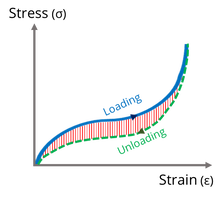Unmixing! |
Curriculum links: A-level Physics: Mechanics and Fluids, Viscosity
When we stir milk into our coffee, we can’t reverse the process by stirring in the other direction, but with this home-made apparatus we can seemingly reverse time and undo the mixing of coloured fluids! How is this possible?
|
|
How it Works
This is a simplified, home-made version of a well- known piece of apparatus called a Taylor-Couette Cell [1]. It relies on the viscosity of the fluid, among other factors. The fluid in our cell is glycerine, a commonly used ingredient in cosmetics and food, which is about 1000 times more viscous than water. The coloured fluids are glycerine with added food colouring.
|
In the Mathematics of Waves and Materials group we research viscoelastic materials, which combine the properties of viscous fluids and elastic solids. Viscoelastic materials are defined in terms of their response to stress (a force applied per unit area) and strain (the deformation in the material that results from stress). You can find out about viscoelasticity here, but what is a viscous fluid?
Viscosity in fluids is also a description of the response of the material to stress. It is defined as the ratio of shear stress (stress applied parallel to the surface or cross-section of the fluid), and velocity gradient (the difference in velocity between different points in the fluid). |
Viscosity and Reynolds Number
More simply put, viscosity is a measure of the resistance of a fluid to flow. It describes the friction between the particles in the fluid. Highly viscous fluids such as treacle and glycerine are resistant to flow and appear thick and sticky.
The way a fluid flows may be predicted mathematically by a number called the Reynolds number, Re. Reynolds number is a ratio of the inertial forces (forces due to momentum) vs the viscous forces in a fluid. It is given by:
\begin{equation}
Re = \frac{density \times velocity \times length \; scale}{viscosity}
\end{equation}
More simply put, viscosity is a measure of the resistance of a fluid to flow. It describes the friction between the particles in the fluid. Highly viscous fluids such as treacle and glycerine are resistant to flow and appear thick and sticky.
The way a fluid flows may be predicted mathematically by a number called the Reynolds number, Re. Reynolds number is a ratio of the inertial forces (forces due to momentum) vs the viscous forces in a fluid. It is given by:
\begin{equation}
Re = \frac{density \times velocity \times length \; scale}{viscosity}
\end{equation}
Low Reynolds Number: Laminar Flow
If the Reynolds number is very low, the viscous forces are dominant and we get laminar flow. Fluid particles slide smoothly past each other in parallel layers. Our Taylor-Couette cell is an example of laminar flow. It requires a small distance between the inner and outer cylinders, a slow velocity and high viscosity. If we balance these factors correctly and turn the inner cylinder slowly enough the colours slip past each other in layers, and return (almost!) to their original positions when we turn the other way.
If the Reynolds number is very low, the viscous forces are dominant and we get laminar flow. Fluid particles slide smoothly past each other in parallel layers. Our Taylor-Couette cell is an example of laminar flow. It requires a small distance between the inner and outer cylinders, a slow velocity and high viscosity. If we balance these factors correctly and turn the inner cylinder slowly enough the colours slip past each other in layers, and return (almost!) to their original positions when we turn the other way.
|
High Reynold Number: Turbulent Flow
What about the opposite case? At the other extreme, a very high Reynolds number, for example a in low viscosity fluid with high velocity movement, predicts turbulent flow where the inertial forces are dominant. Turbulent flow is associated with aircraft noise in particular. The related research fields of aero- and hydroacoustics are concerned with the noise generated by flows both on their own (jet noise) and when interacting with solid boundaries (trailing edge noise) in air and water. |
To make our Taylor-Couette apparatus we used a small glass, a test tube and pipette from a child’s chemistry set, and glycerine (available in large supermarkets in the cake decorating aisle). A ring cut from polystyrene holds the test tube in place at the bottom and a similar piece keeps it steady at the top. The coloured fluid is glycerine with a drop of red or blue gel food colouring. The viscosity of the coloured fluid closely matches the bulk glycerine, and the distance between the inner and outer cylinders is small.
The design for a more sophisticated apparatus is described by Fonda and Sreenivasan in reference [2]
The design for a more sophisticated apparatus is described by Fonda and Sreenivasan in reference [2]
[1] G. I. Taylor (1923), "VIII. Stability of a viscous liquid contained between two rotating cylinders", Philosophical Transactions of the Royal Society of London. Series A, Containing Papers of a Mathematical or Physical Character, 223 289–343
[2] E. Fonda, and K. R. Sreenivasan (2017), "Unmixing demonstration with a twist: A photochromic Taylor-Couette device", American Journal of Physics 85, 796-800
[2] E. Fonda, and K. R. Sreenivasan (2017), "Unmixing demonstration with a twist: A photochromic Taylor-Couette device", American Journal of Physics 85, 796-800

